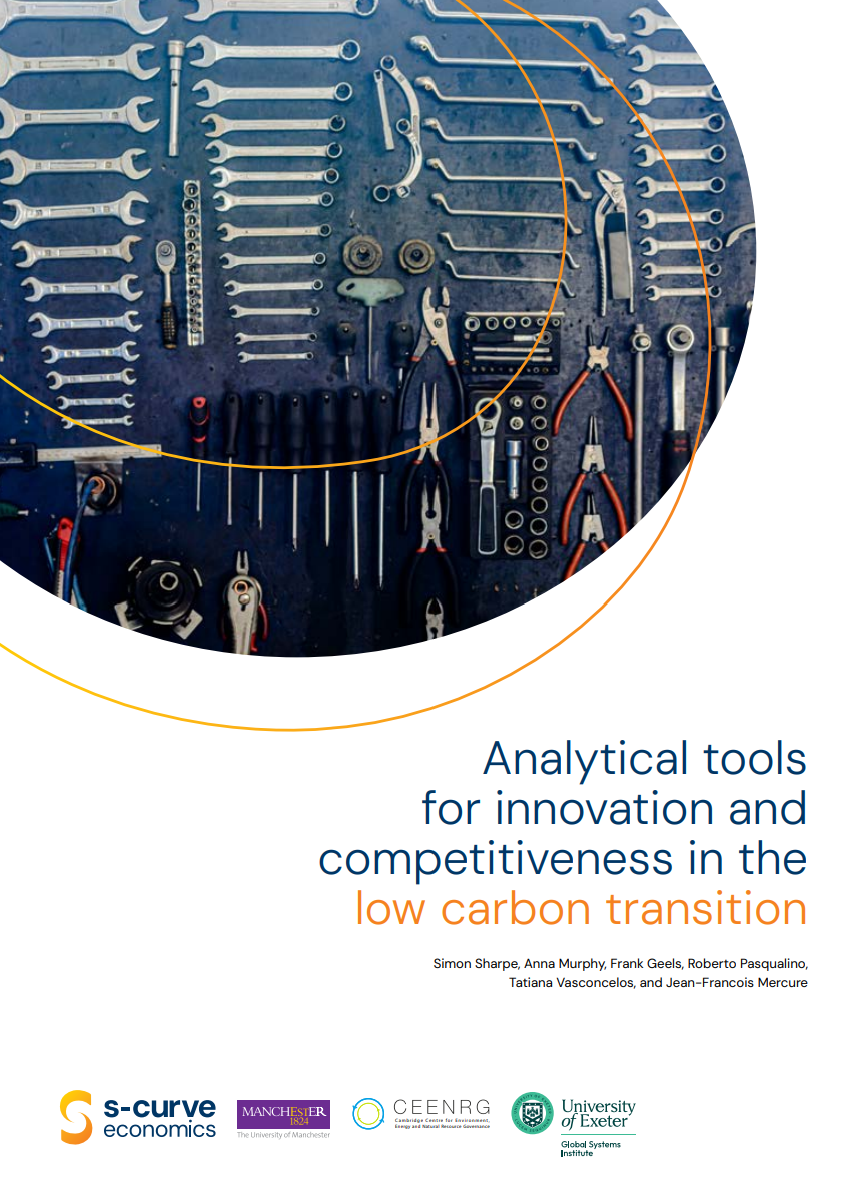Analytical tools for innovation and competitiveness in the low carbon transition
 a publication S-Curve Economics with the support of C3A
a publication S-Curve Economics with the support of C3A
Authors
Simon Sharpe, Anna Murphy, Frank Geels, Roberto Pasqualino, Tatiana Vasconcelos, and Jean-Francois Mercure.
Abstract
How can economic analysis help governments respond more effectively to the challenges and opportunities of the low-carbon transition? This report sets out a suite of conceptual frameworks, decision-making tools and economic models to support ministries of finance and other public decision-makers to make informed policy decisions relating to innovation, competitiveness and economic transformation in the context of the low-carbon transition.
It explains why and how conventional tools often miss key dynamics of transition, and outlines an emerging set of methods well suited to shaping structural change, driving tipping points and strengthening desirable feedback loops.
Proposed approaches include innovation-driven industrial strategy, Risk-Opportunity Analysis, probabilistic clean technology cost forecasts based on learning curves, systems mapping, systems dynamics models, agent based models, economic complexity analysis, and disequilibrium macroeconomic models. The report includes short contrasting assessments of policy findings from different approaches, case studies on the application of such methods in Brazil, Denmark, Georgia, South Africa, Czechia and Angola, and recommends priorities for knowledge-sharing and capacity building.
Read the paper
To read the executive summary or the full report, visit the S-Curve Economics website: www.scurveeconomics.org/publications
